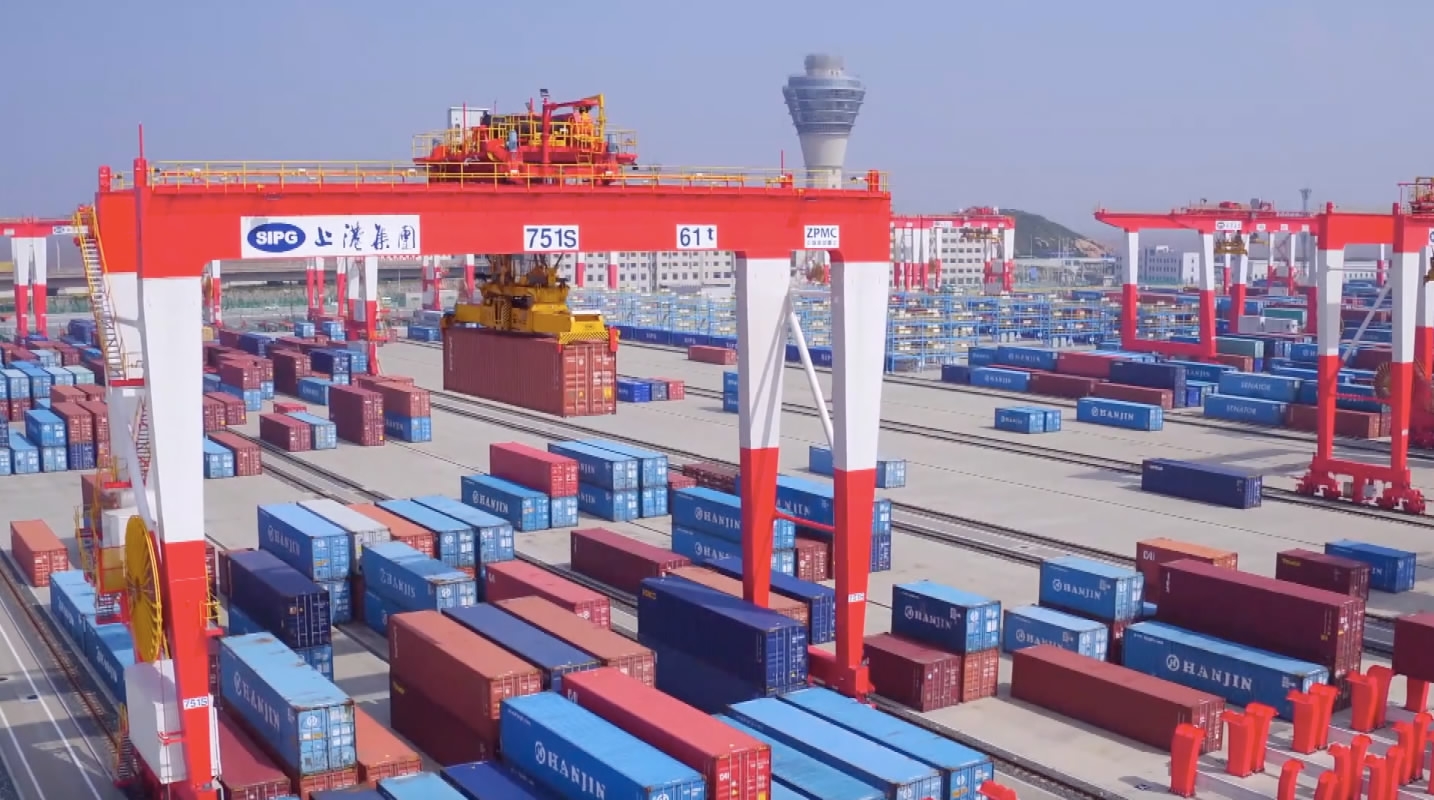
transport
12:27, 20-Dec-2017
High hopes for Phase IV of E China's Yangshan Deep Water Port
By CGTN's Cui Huiao

Huang Hua, 36, has been working at the Yangshan Deep Water Port for almost 13 years. But for the first twelve and a half years, he worked as a driver, operating machines in sky-high cranes. Now, his work location has moved to a control center, monitoring the cranes from afar.
“At a conventional port, I would work with a hand shank all day, repeating the same motion 12 hours a day, four days a week. I used to have lots of neck problems. Now the task is less physically challenging, but also much more complex,” says Huang, who is now a crane tele-operator.

CGTN Photo
CGTN Photo
Now, Huang's daily work is to closely monitoring a dozen computer screens, collecting data on the operation status of each cargo crane, and dealing with emergencies and malfunctions.
Manual workers like Huang are no longer needed at the terminal. Bridge cranes, auto-guided vehicles and rail-mounted gantry cranes are now taking over the job. While the labor cost is down 70 percent, the handling efficiency has increased by 50 percent.

CGTN Photo
CGTN Photo
The Vice General Manager of the Shangdong Container Terminal Branch, Luo Yunjie told CGTN that all the automated handling equipment are designed and manufactured in China. Once the fourth phase enters full operation, it will be able to handle 6.3 million TEUs. This will further consolidate Shanghai Port’s status as the busiest in the world.
Shanghai has the ambition of becoming a global shipping center by 2020. Phase IV of the Yangshan Port marks an important step in reaching that goal. In the near future, the Shanghai Port not only aims to gather more value-added shipping resources and offer more comprehensive logistics and services, but also to play an even bigger role in the country’s Belt and Road initiative.

CGTN Photo
CGTN Photo
For example, SIPG is currently participating in the construction of a new terminal in Haifa Bay, which will be the biggest seaport in Israel.
“We are sharing our experience of management and techniques with them. Their technician team has also contributed to the construction of the Yangshan Port. This kind of exchange benefits both countries greatly,” says Luo.
Shanghai currently ranks sixth among the world's top shipping centers like New York, London and Dubai. The next step for Shanghai would be to establish a competitive environment that attracts more head offices of global enterprises, and provide a standard of service that is comparable to those already established cluster hubs.
1157km

SITEMAP
Copyright © 2018 CGTN. Beijing ICP prepared NO.16065310-3
Copyright © 2018 CGTN. Beijing ICP prepared NO.16065310-3